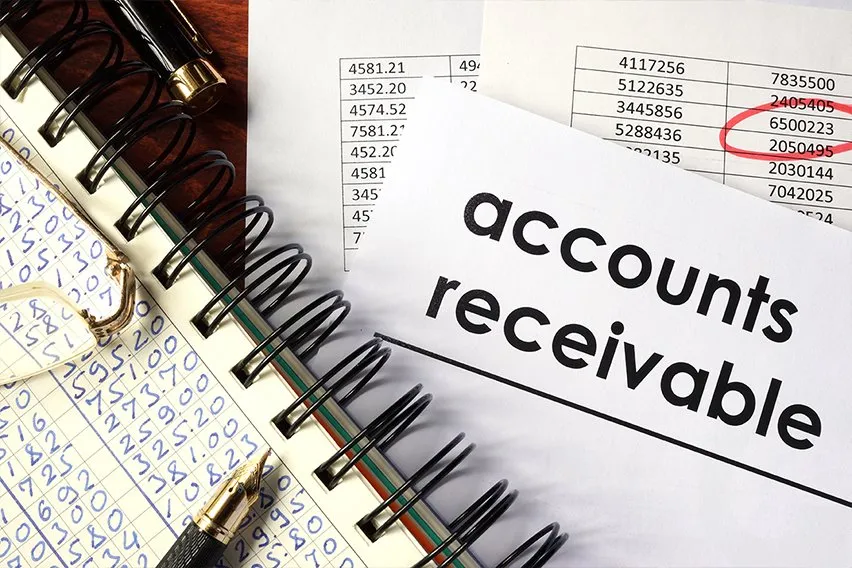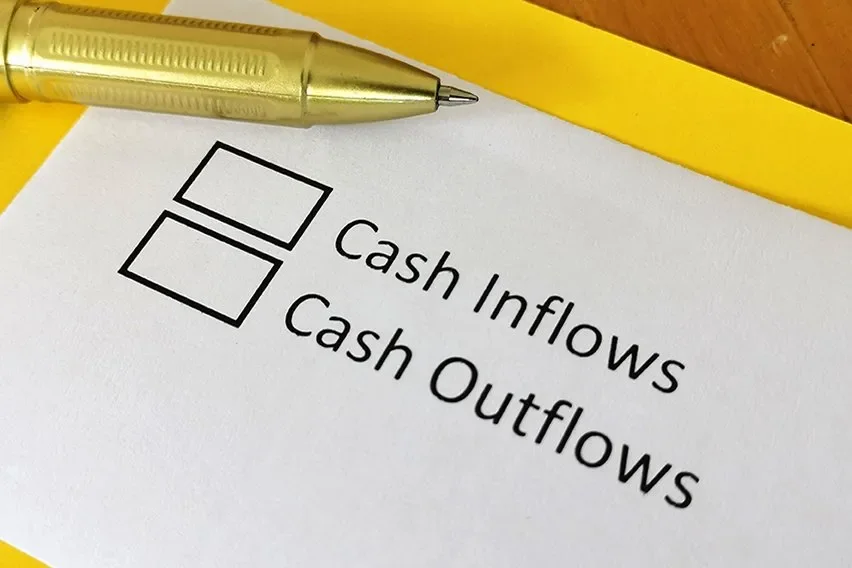What is Negative Cash Flow & How to Manage It?

At different stages of your business, you might experience situations where your expenses outweigh incoming cash. This condition is known as negative cash flow.
Should small businesses worry about negative cash flow? The truth is it depends.
In this article, we would look at the best ways to manage cash flow deficits.
Here’s What We’ll Cover:
What Happens In Negative Cash Flow?
What are the Reasons for Negative Cash Flow?
How Does Negative Cash Flow Affect Small Businesses?
3 Ways To Recover From Negative Cash Flow
What Happens In Negative Cash Flow?
Negative cash flow is when there is some lopsidedness in a company’s earnings. In other words, inflow does not match expenses, causing the business to spend more cash than it takes in.
Depending on your company’s operations, you might experience poor cash flow at different points. For one, if you purchase additional equipment for an expanding business, you could outspend your earnings for a period.
Negative cash flow doesn’t always equate to losses—companies can make a net profit but still incur higher expenses than their revenues.

Is Negative Cash Flow Bad?
This is the one time when negative doesn’t necessarily mean bad.
One-off occurrences of negative cash flow are normal and inevitable in business. However, when negative cash flow stretches for months, you should be worried. If your expenses continuously outweigh revenue, it will become for you to meet up with running costs, break-even, and make a profit.
Precisely, you shouldn’t be on pins and needles about cash flow issues if;
- You are a new business investing resources to gain popularity in your market.
- You are expanding your services to other markets.
- The demand for your product is seasonal—for example, a summer clothing line or a Christmas gift shop.
What are the Reasons for Negative Cash Flow?
The first thing negative cash flow tells you is that you’re spending more money than your business makes. When you dig deeper, you could discover that you have;
- Increased Expenses and Overhead Costs
- Outstanding Customer Payments
- Poor Product Pricing
- No Realistic Financial Plan
Increased or Unexpected Expenses
Despite having a financial plan for a period, unplanned expenses can crop up, leading you to spend above your cash inflow threshold. For example, if your equipment develops a sudden fault, you need to pay for repairs. Also, if the prices of raw materials bump up, it can increase your overhead costs and upset your revenue-cash flow balance.
Outstanding Customer Payments
Extending credit to customers is a brilliant move, but it can hurt your cash flow in the medium and long term.
How?
When most of your clients do not settle their debts on time, it reduces your revenue significantly. Business owners struggle to meet up with financial commitments because of the sheer volume of pending invoices.
Poor Pricing
Setting up an ideal pricing system for your business isn’t a decision made off the top of your head. If you do this, you could end up overpricing or underpricing your product.
Pricing your product above the market means fewer people will buy from you. Simultaneously, if you’re charging too low, your business might not be profitable. Therefore, it’s best to conduct a feasibility study plus market research first and use this data to fix ideal prices.
No Realistic Financial Plan
Without a well-laid-out budget, it is difficult for a business to meet its financial obligations. The company will have a ton of unplanned expenses that’s way above its revenue. If your cash flow forecast is wide off the mark, it becomes difficult to predict operating costs.
How Does Negative Cash Flow Affect Small Businesses?
Poor cash flow management affects the viability of small businesses, especially when it persists.
Private investors look at your cash flow statement before deciding. If there’s no consistent positive cash flow in your financial statement, investors might become skeptical about your business’s financial health as you cannot guarantee ROI.
Other setbacks include;
- Eroded business growth
- Inability to meet up with core business expenses
- Arbitrary budget cuts
- Business losses
- Poor or inefficient operations

3 Ways To Recover From Negative Cash Flow
There’s no plug-and-play solution for recovering from a cash flow deficit.
Ultimately, you need to take a keen look at your balance sheet and cash flow statements. Then craft a unique recovery plan to help you achieve healthy cash flow.
Here are a few cash flow recovery tips you can try out:
- Cut down your expenses
- Streamline your payment terms
- Have an emergency stash
Cut Down Your Expenses
Take a hard look at your overhead costs and operating expenses—is there anything you shouldn’t be paying for? For example, consider outsourcing specific tasks instead of hiring someone in-house.
Here, it would be best if you made some hard business decisions. Consider merging job roles, slowing down your investing activities, or working with more affordable vendors and suppliers.
Streamline Your Payment Terms
If your business is ridden with extended debt or bad debt, restructure your payment terms and conditions. Cutting back on credit is a smart way to achieve positive cash flow by encouraging customers to make on-time payments.
Have an Emergency Stash
To help you meet unexpected financial obligations, create an emergency stash for your business. This is the money for sorting out sudden expenses like fixing equipment, credit card fees, and, surprisingly, taxes.
A hack for building up your emergency funds fast without increasing your cash inflow is to cut down cash outflow and divert these funds into your stash.
Wrapping Up
If you’re dealing with negative cash flow, you can apply for business loans to help you cover expenses in the short term. Ultimately, draw up a solid plan to improve your business’s financial situation and get your books back to green.
More Cash Flow Resources
RELATED ARTICLES

 What Is BAS (Basic Allowance for Subsistence)?
What Is BAS (Basic Allowance for Subsistence)? 4 Ways to Increase Accountability in the Workplace
4 Ways to Increase Accountability in the Workplace The 7 Best Accounts Payable Automation Software
The 7 Best Accounts Payable Automation Software Accounts Receivable Process: Step-By-Step Guide
Accounts Receivable Process: Step-By-Step Guide Cash Inflow vs Outflow: What’s the Difference?
Cash Inflow vs Outflow: What’s the Difference? What Is ARN Number & How to Track Transactions?
What Is ARN Number & How to Track Transactions?